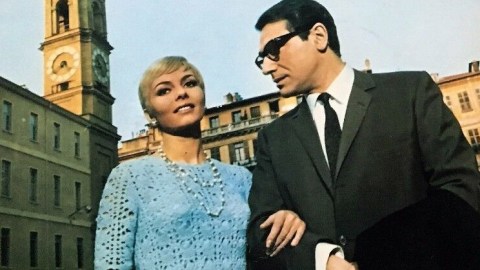17. 4. – 19. 4. 2026
The Other Truth

 Original title: La Seconde Verité
Original title: La Seconde VeritéDirector: Christian-Jaque
Production: 1966, France / Italy
Length: 90 min.
Screened:
KRRR! 2020: 70mm 2.2:1, Colours partly faded, Digital Sync, Spoken language: French, Subtitles: Slovak, EnglishKRRR! 2023: 70mm 2.2:1, Colours partly faded, Digital Sync, Spoken language: French, Subtitles: Slovak, English
Annotation for KRRR! 2023
At the age of 40, Dijon lawyer Pierre Montand is considered a star on the rise. One evening, after a brilliantly won trial, he and his colleagues go to a local club to celebrate this success. There he meets Nathalie, a medical student who moonlights every night as a DJ. The self-confident lawyer is disarmed by her carefree nature and the two fall into a passionate relationship... but Pierre is married and the discovery of her infidelity could damage his career. And while Nathalie emotionally urges Pierre to finally divorce, Pierre, despite all the passion, keeps thinking pragmatically. Although the preceding lines deal with the fateful relationship between a man and a woman and might seem to be a melodrama, at its core, The Second Truth is primarily a detective story, as its story begins with the discovery of a corpse. The film attempts to spice up its genre structure by interweaving several temporal planes, but also by emphasizing an inner doubt: Could I have murdered if I don't remember? The dense atmosphere of The Second Truth is also enhanced by the camera work, which often relies on an unsettling position with tilted framing, placing characters right up to the edges of the composition and emphasising large empty spaces. The biggest attraction at the time of the premiere was the casting of the lead duo, Michèle Mercier and Robert Hossein. They had appeared as an acting duo in several films (e.g., the French-Italian western Rope and Colt; Une corde... un Colt..., 1969), and were particularly famous as the central couple in a series of historical-romance films in which she played the noblewoman Angelica and he played her ill-fated husband, the limping Count Joffrey de Peyrac. In The Second Truth, too, they represent the victims of an inextricable relationship, and here, too, Michèle changes outfit after outfit, with the most pressing question remaining: longer like Angelica or shorter like Nathalie?